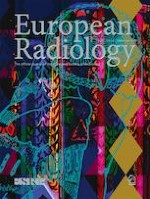Erschienen in:

29.07.2022 | Oncology
A systematic review of prognosis predictive role of radiomics in pancreatic cancer: heterogeneity markers or statistical tricks?
verfasst von:
Yuhan Gao, Sihang Cheng, Liang Zhu, Qin Wang, Wenyi Deng, Zhaoyong Sun, Shitian Wang, Huadan Xue
Erschienen in:
European Radiology
|
Ausgabe 12/2022
Einloggen, um Zugang zu erhalten
Abstract
Objectives
We aimed to systematically evaluate the prognostic prediction accuracy of radiomics features extracted from pre-treatment imaging in patients with pancreatic ductal adenocarcinoma (PDAC).
Methods
Radiomics literature on overall survival (OS) prediction of PDAC were all included in this systematic review. A further meta-analysis was performed on the effect size of first-order entropy. Methodological quality and risk of bias of the included studies were assessed by the radiomics quality score (RQS) and prediction model risk of bias assessment tool (PROBAST).
Results
Twenty-three studies were finally identified in this review. Two (8.7%) studies compared prognosis prediction ability between radiomics model and TNM staging model by C-index, and both showed a better performance of the radiomics. Twenty-one (91.3%) studies reported significant predictive values of radiomics features. Nine (39.1%) studies were included in the meta-analysis, and it showed a significant correlation between first-order entropy and OS (HR 1.66, 95%CI 1.18–2.34). RQS assessment revealed validation was only performed in 5 (21.7%) studies on internal datasets and 2 (8.7%) studies on external datasets. PROBAST showed that 22 (95.7%) studies have a high risk of bias in participants because of the retrospective study design.
Conclusion
First-order entropy was significantly associated with OS and might improve the accuracy of PDAC prognosis prediction. Existing studies were poorly validated, and it should be noted in future studies. Modification of PROBAST for radiomics studies is necessary since the strict requirements of prospective study design may not be applicable to the demand for a large sample size in the model construction stage.
Key Points
• Radiomics based on the primary lesion holds great potential for prognosis prediction. First-order entropy was significantly associated with the overall survival of PDAC and might improve the accuracy of current PDAC prognosis prediction.
• We strongly recommend that at least an internal validation should be conducted in any radiomics study. Attention should be paid to the complex relationships between radiomics features.
• Due to the close relationship between radiomics and big data, the strict requirement of prospective study design in PROABST may not be appropriate for radiomics studies. A balance between study types and sample sizes for radiomics studies needs to be found in the model construction stage.